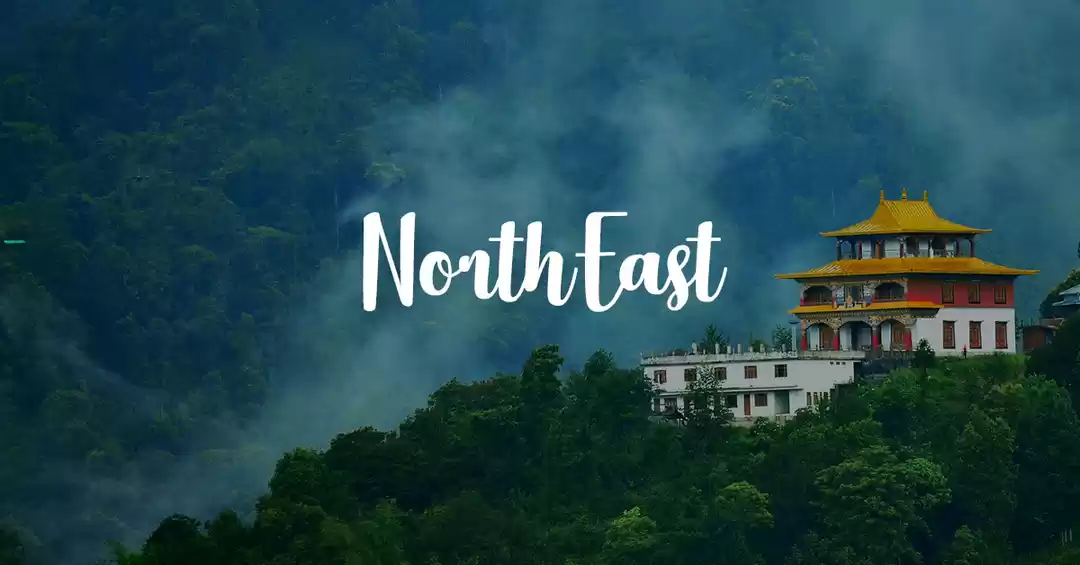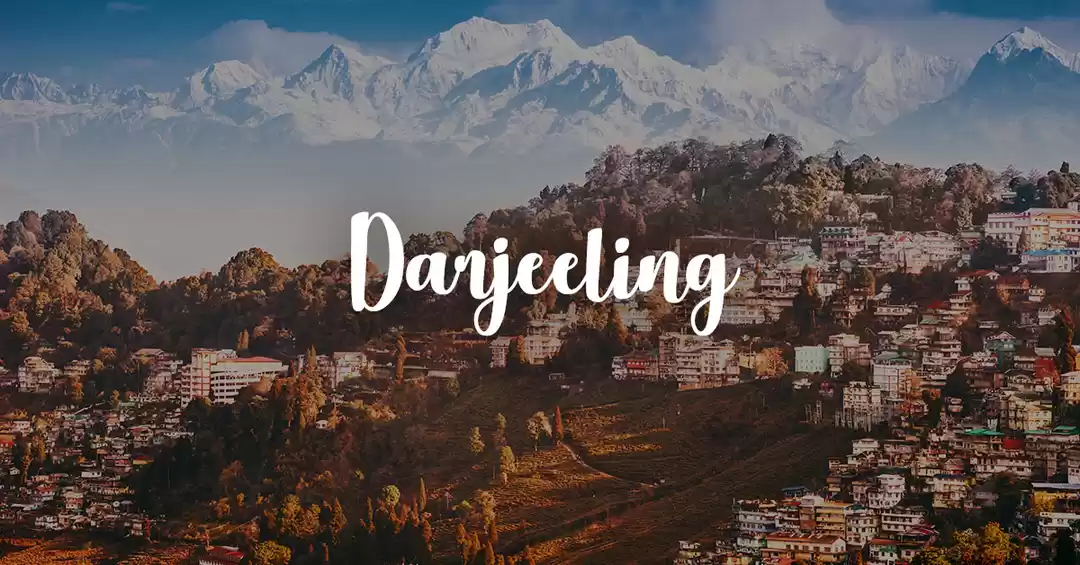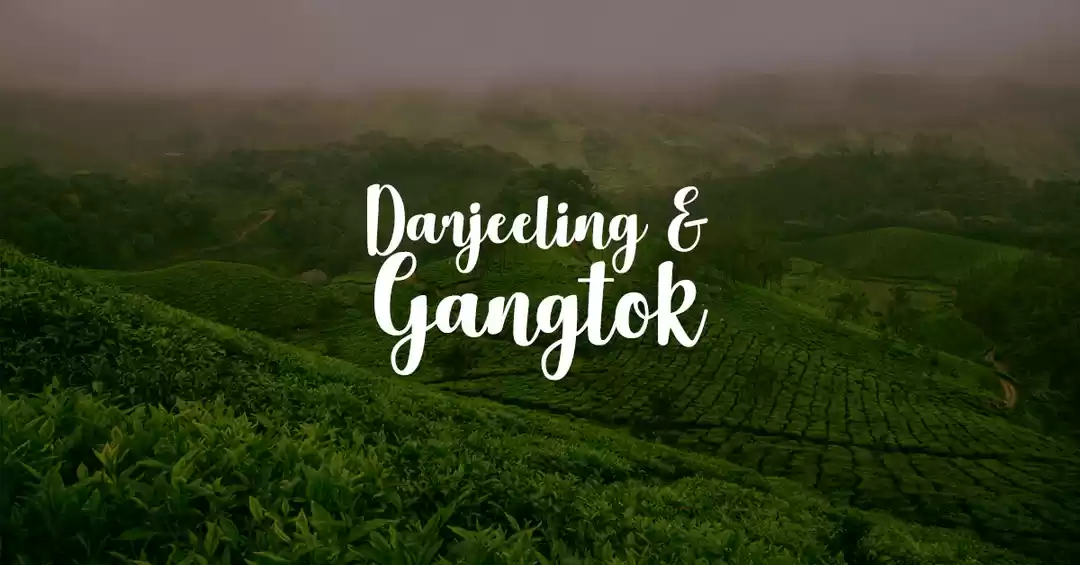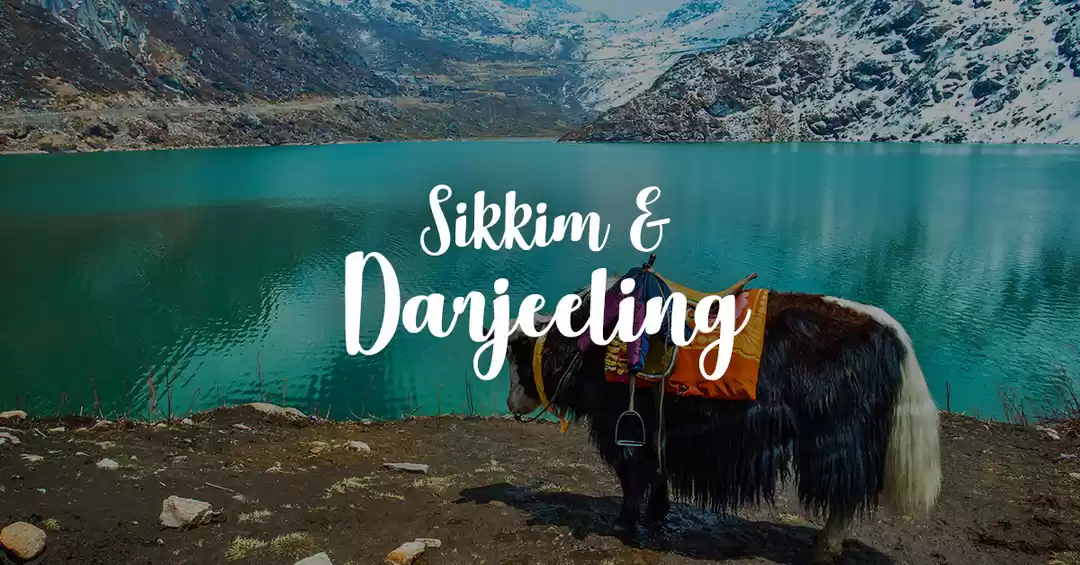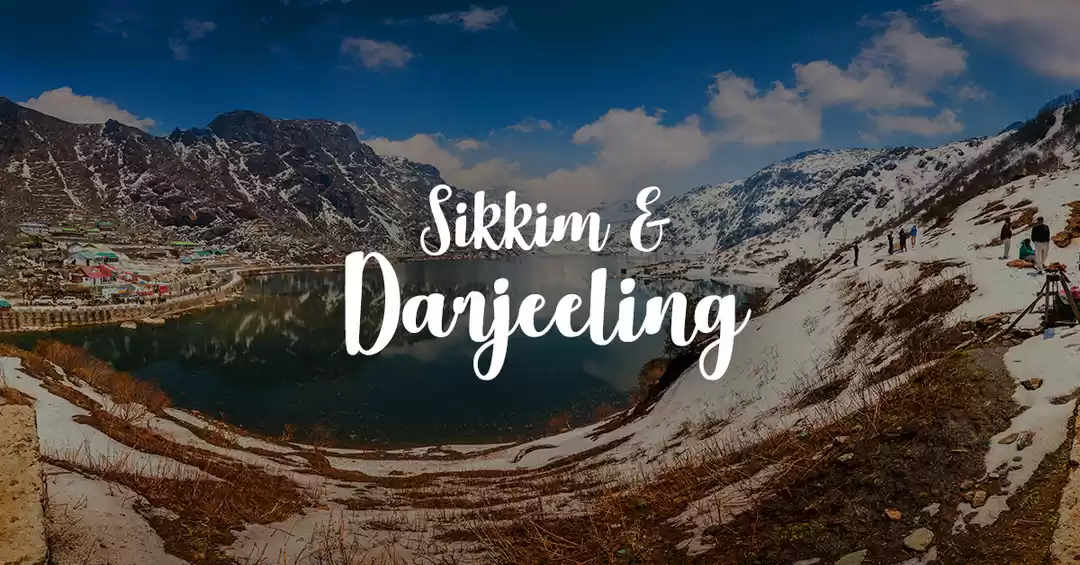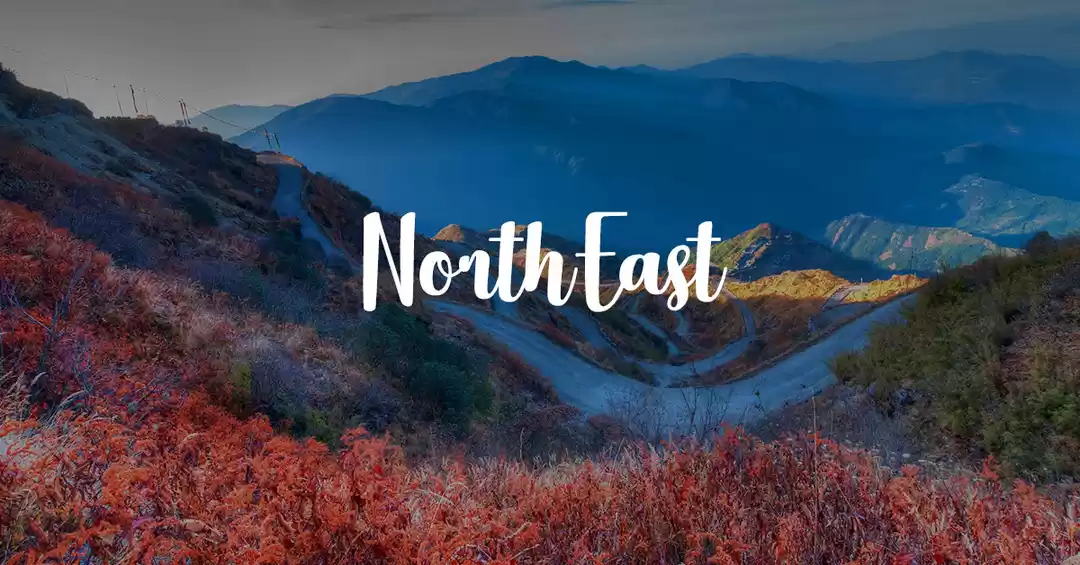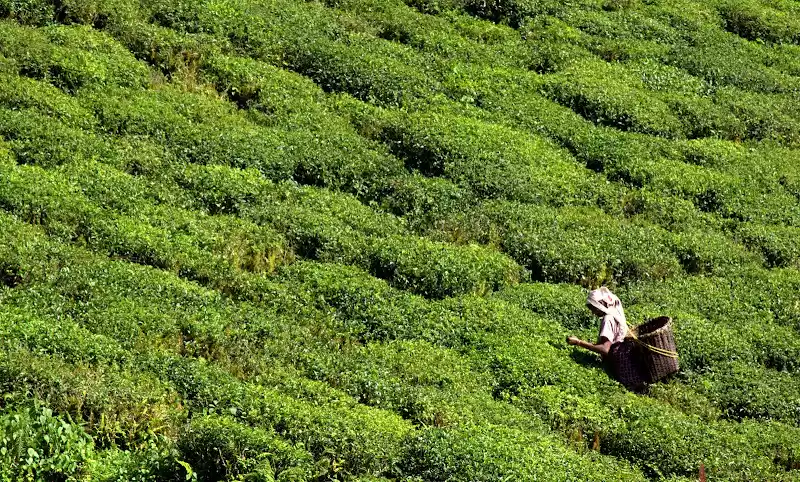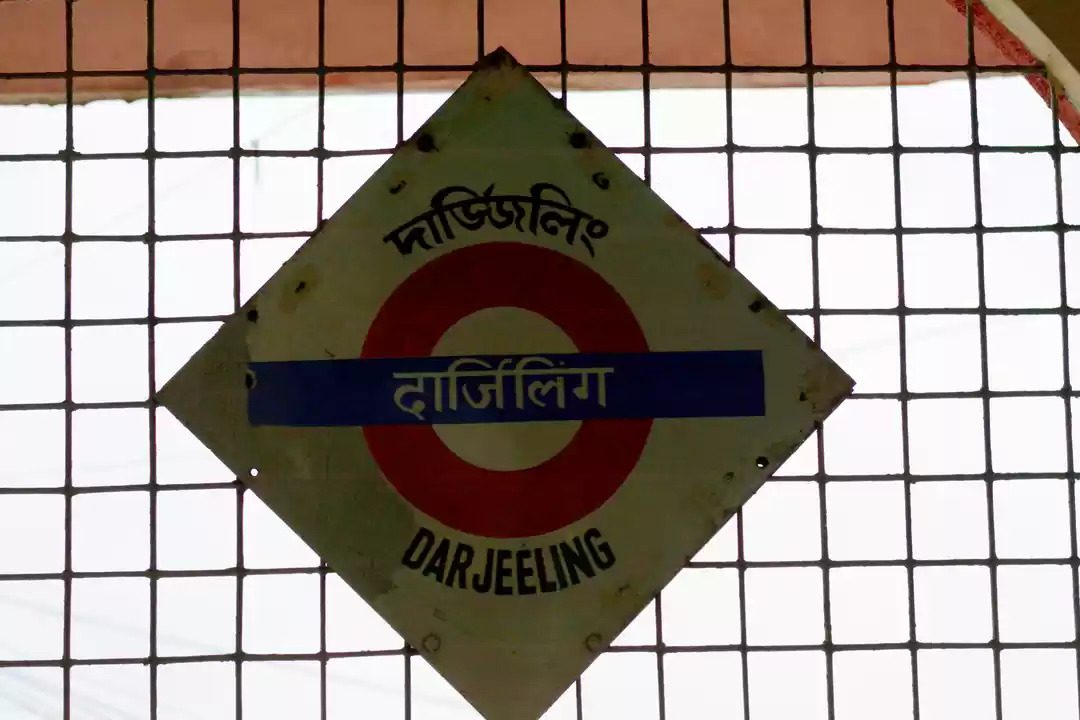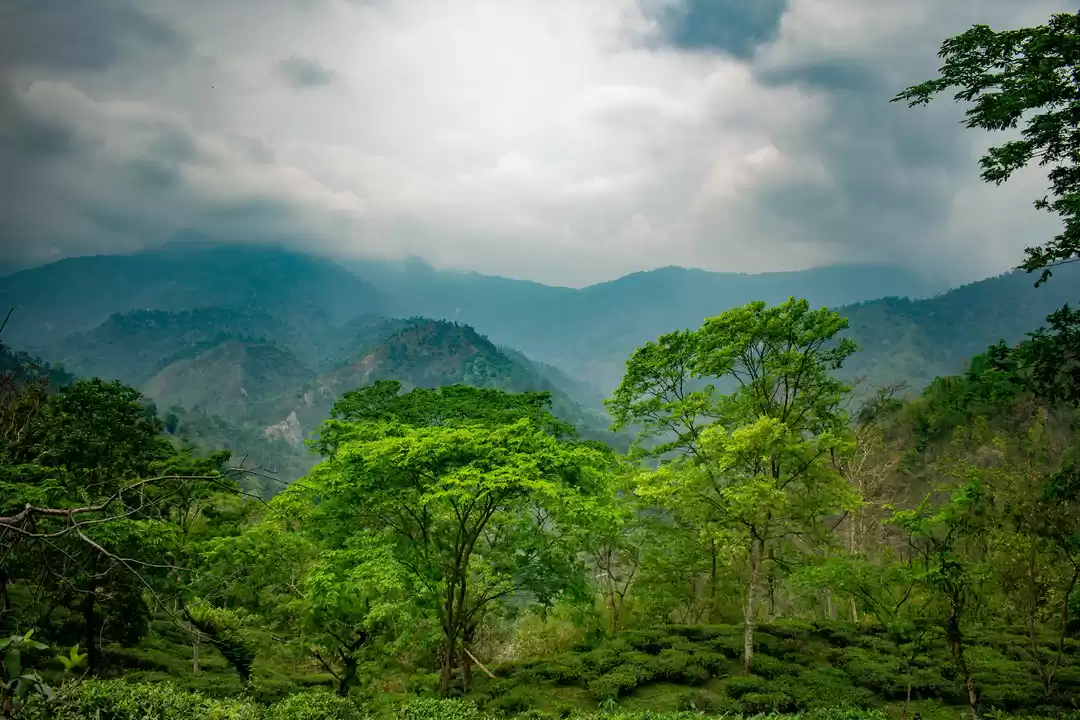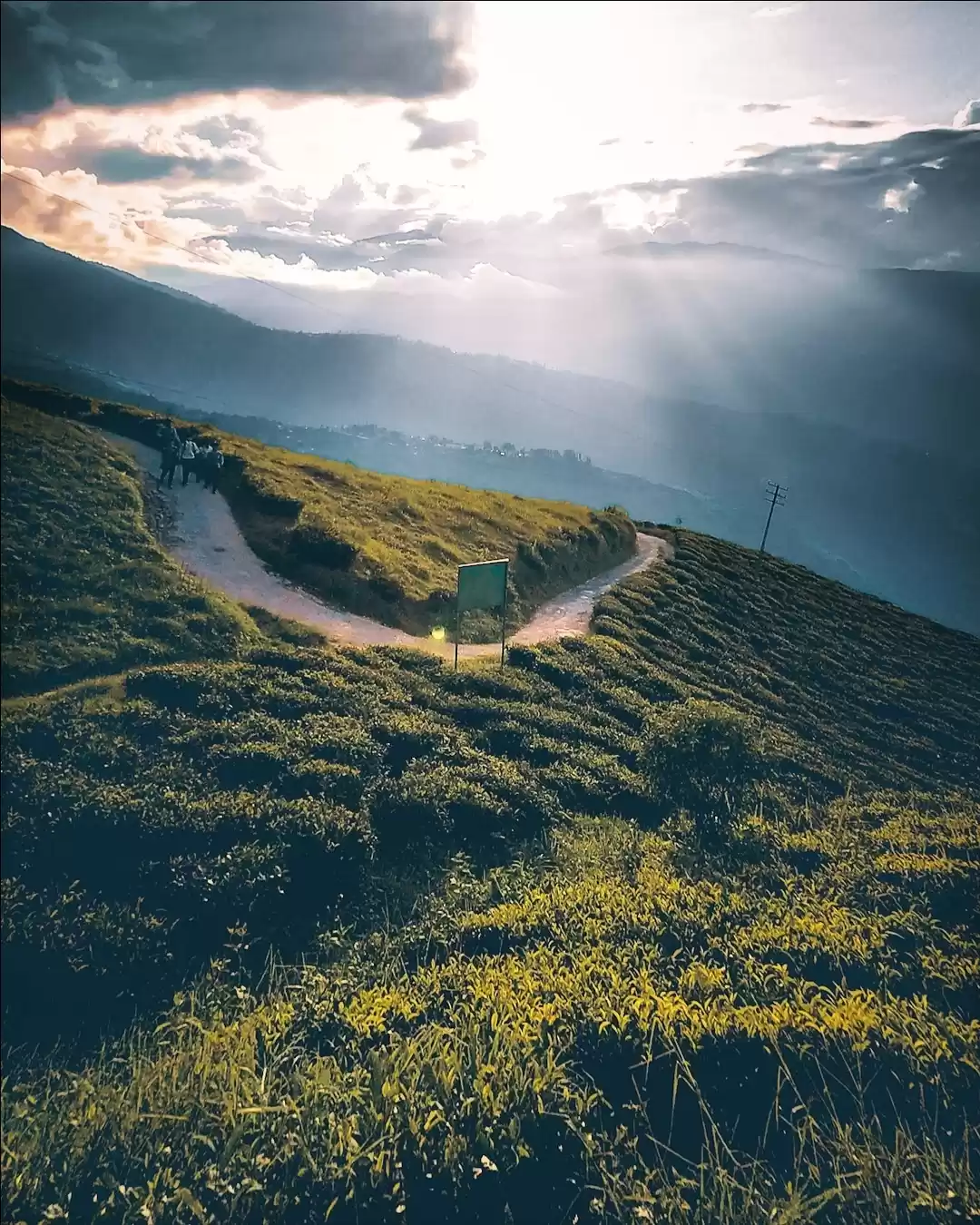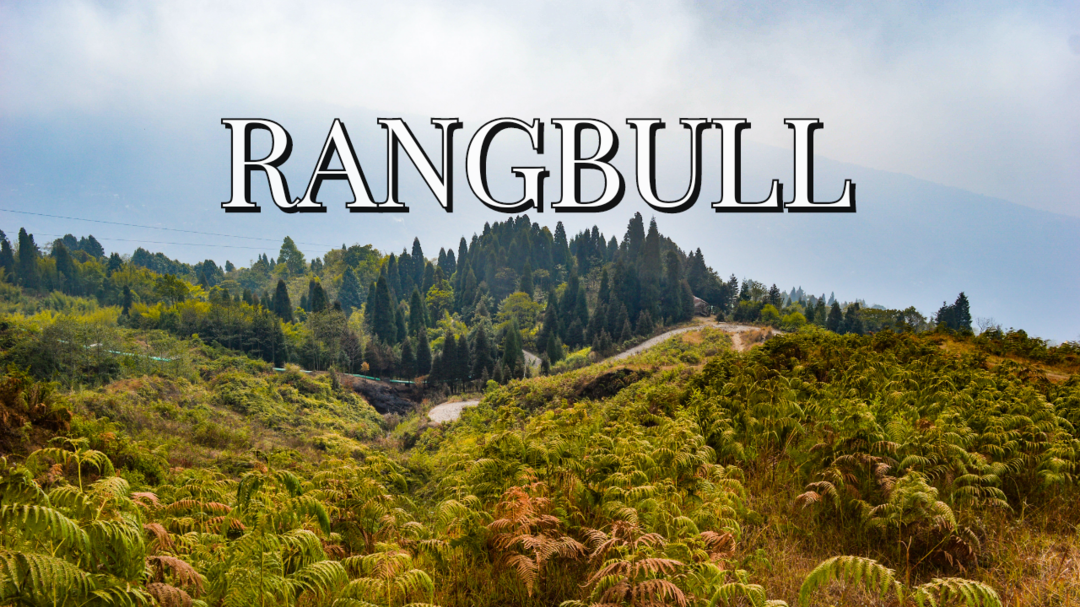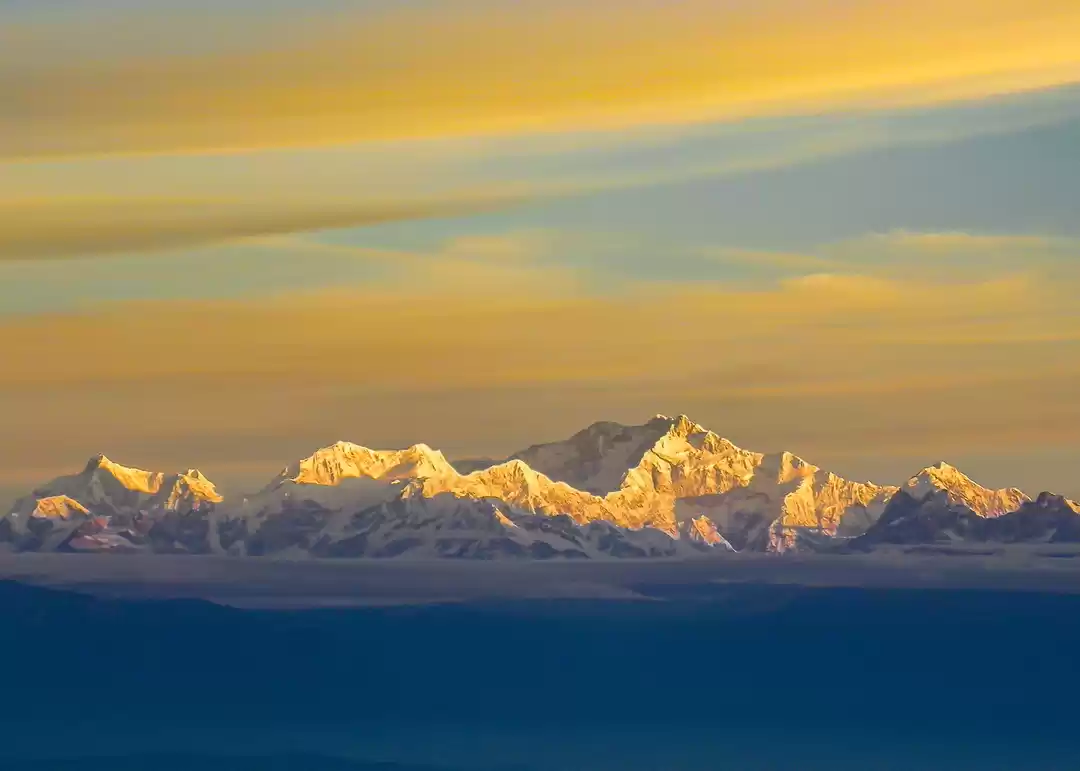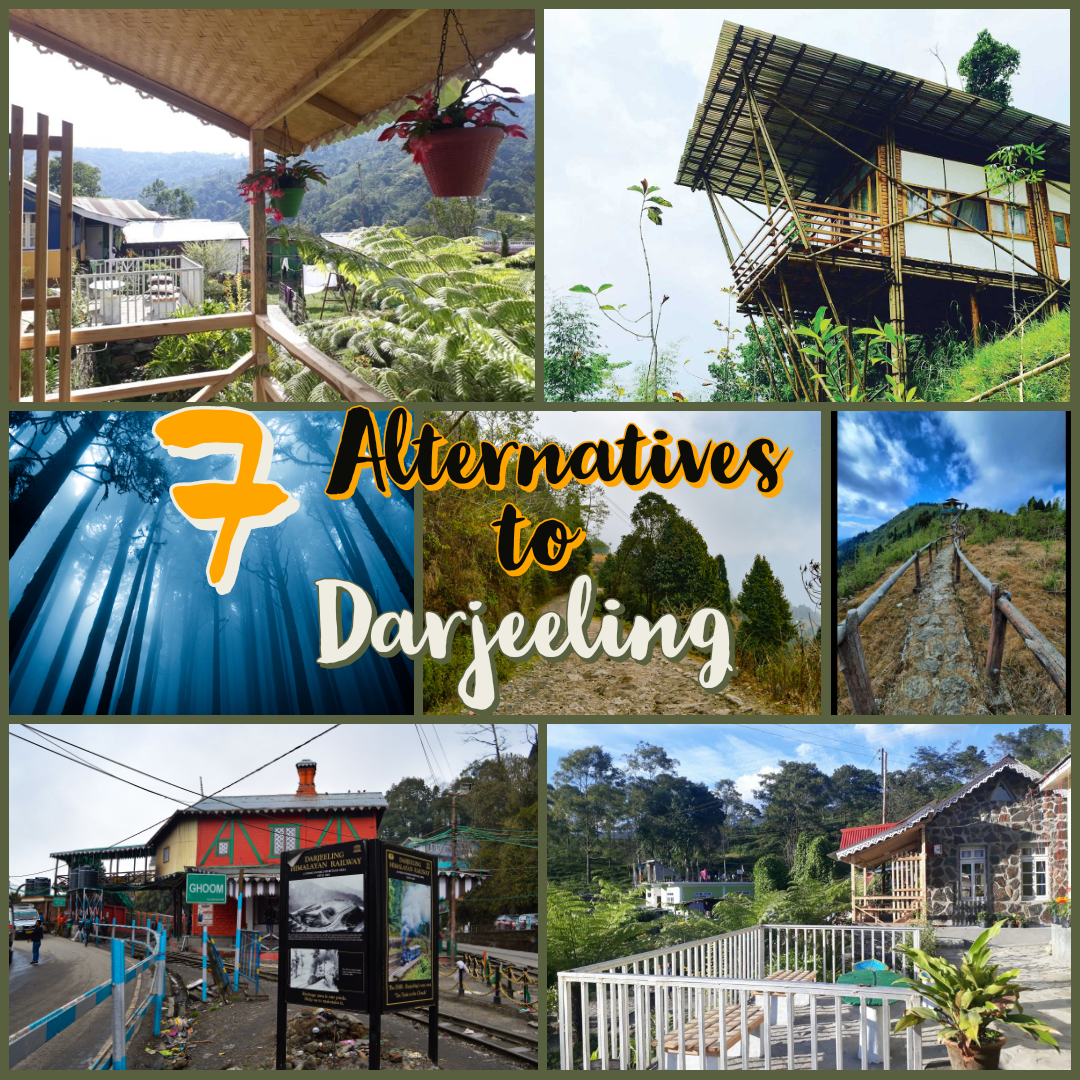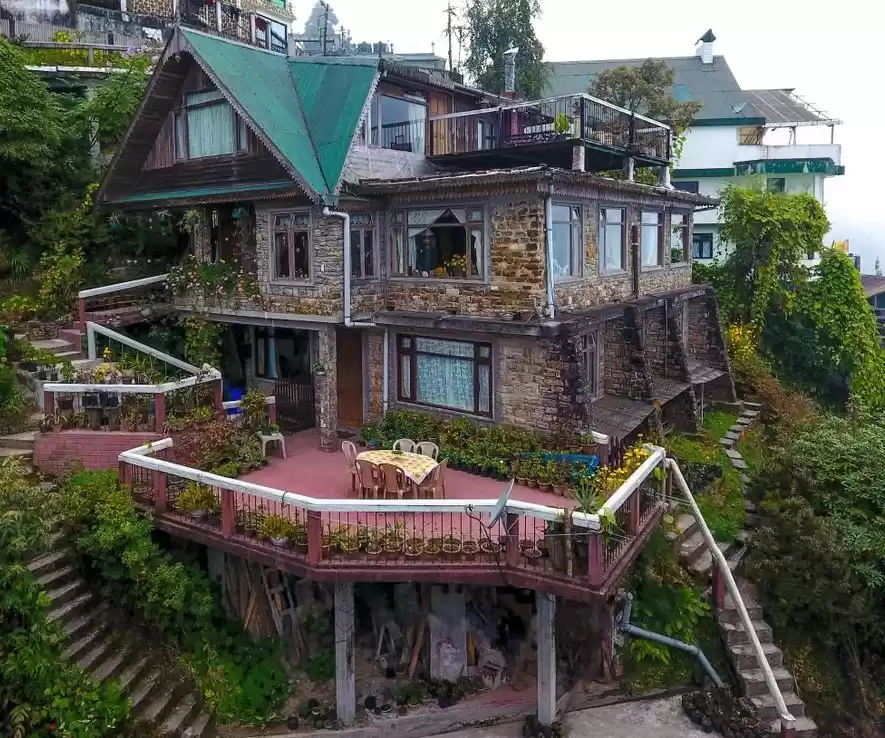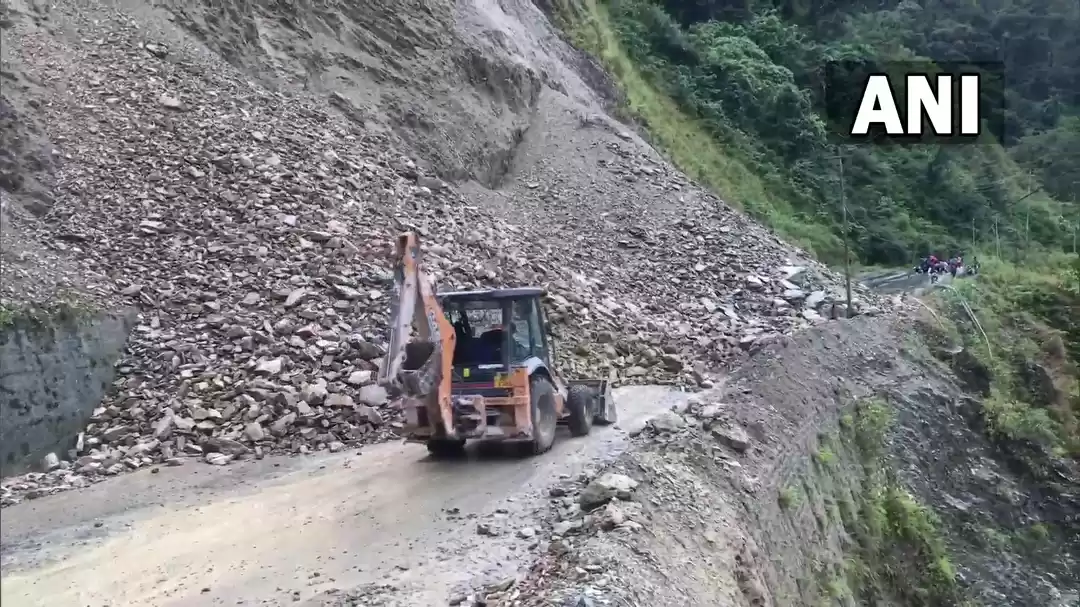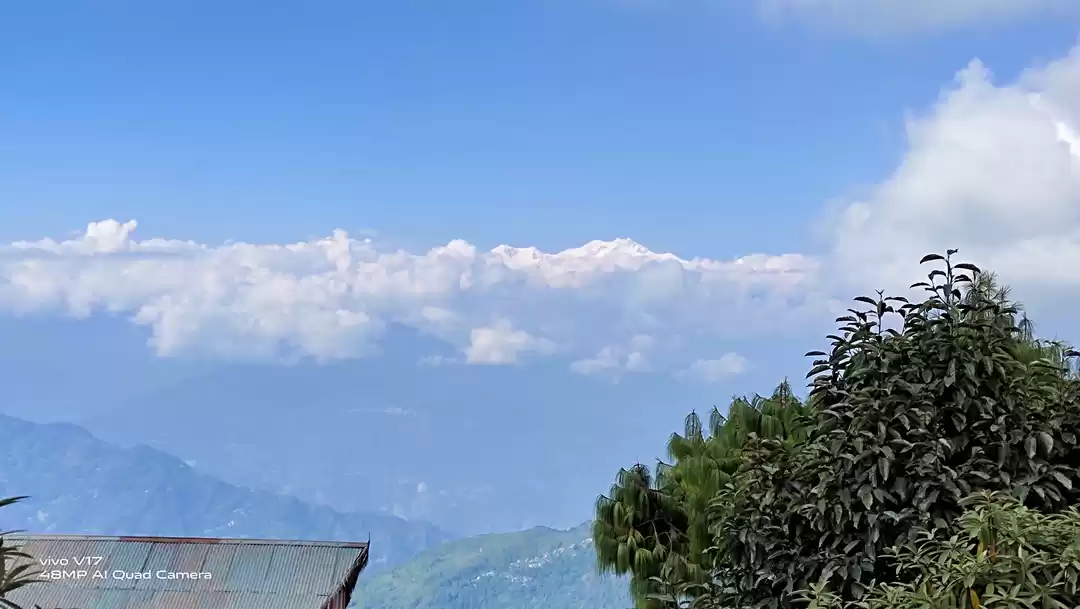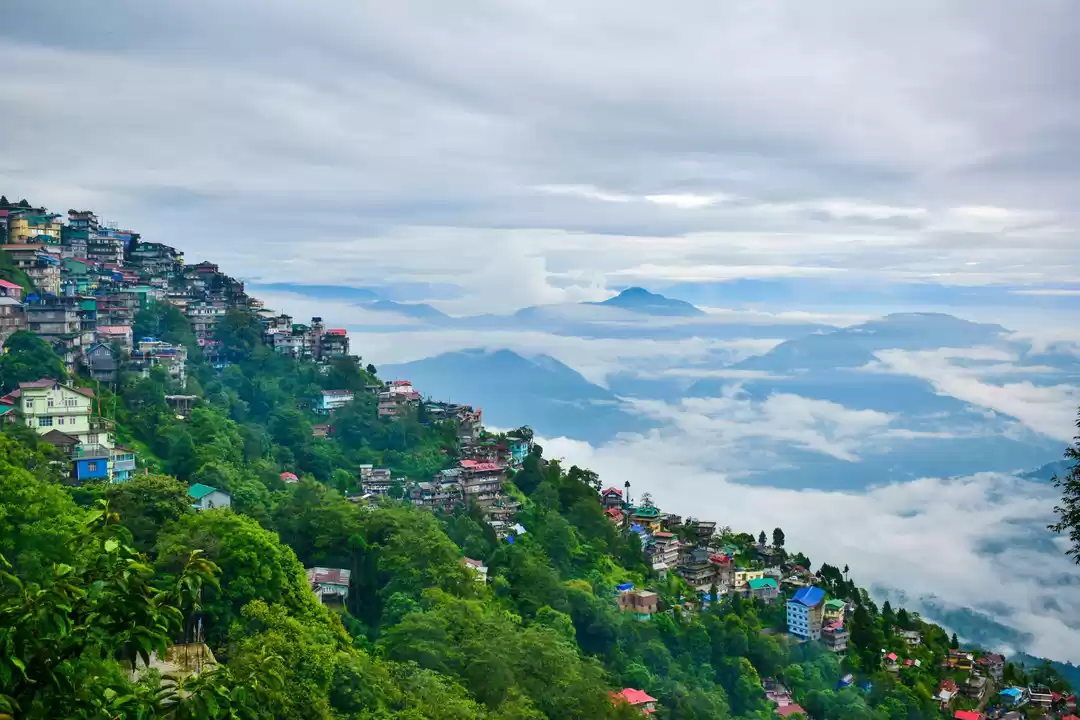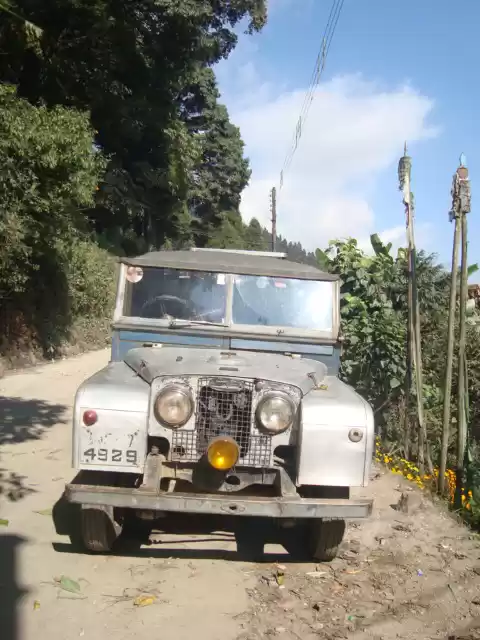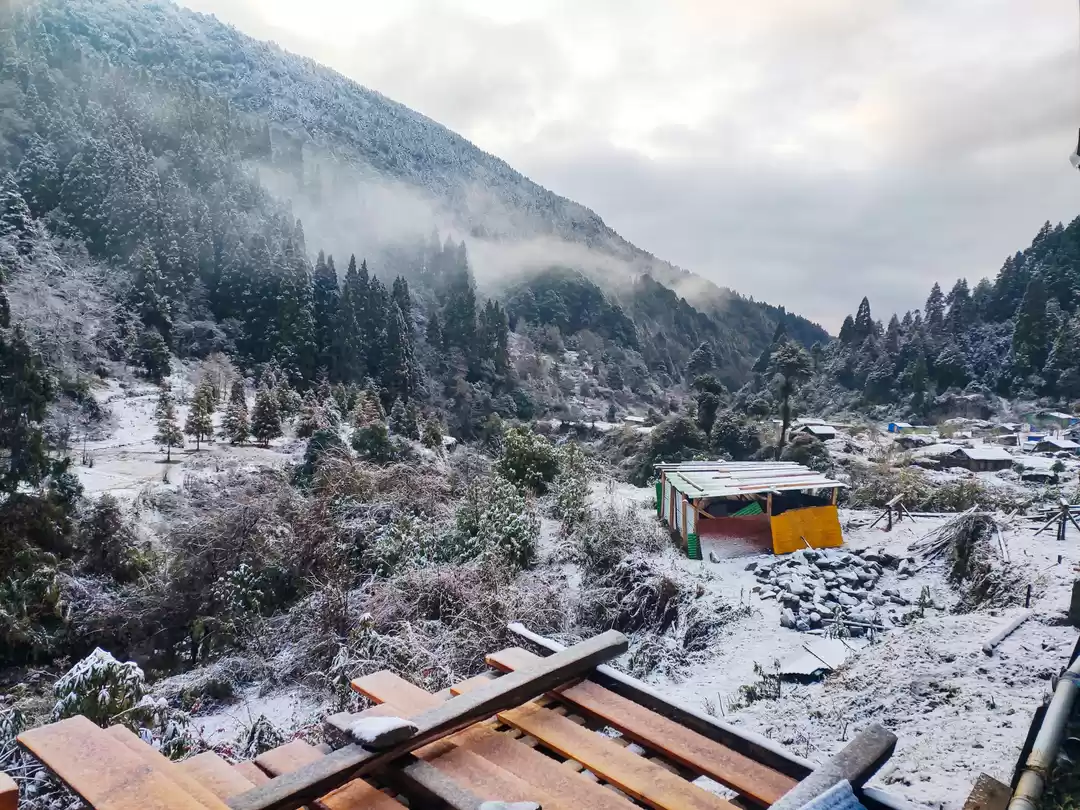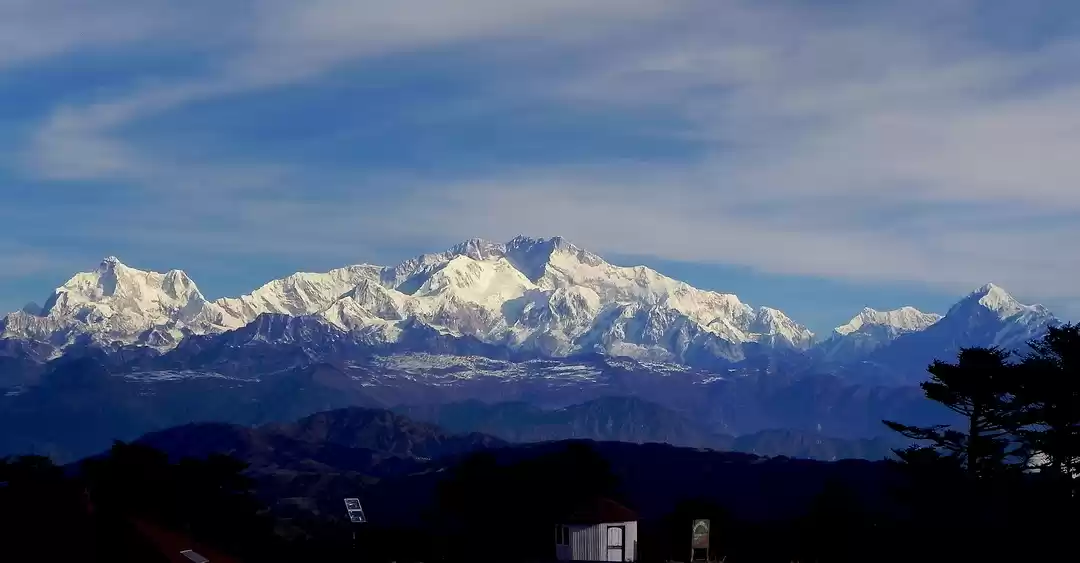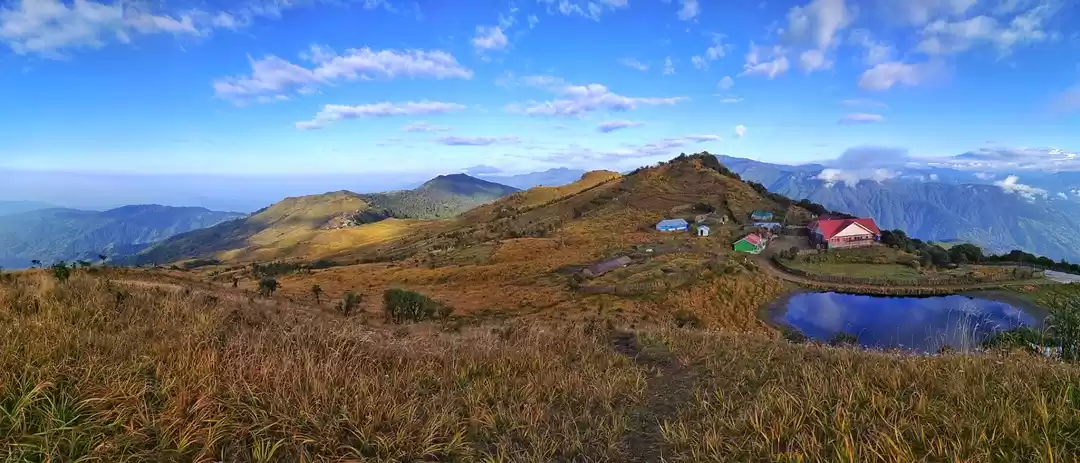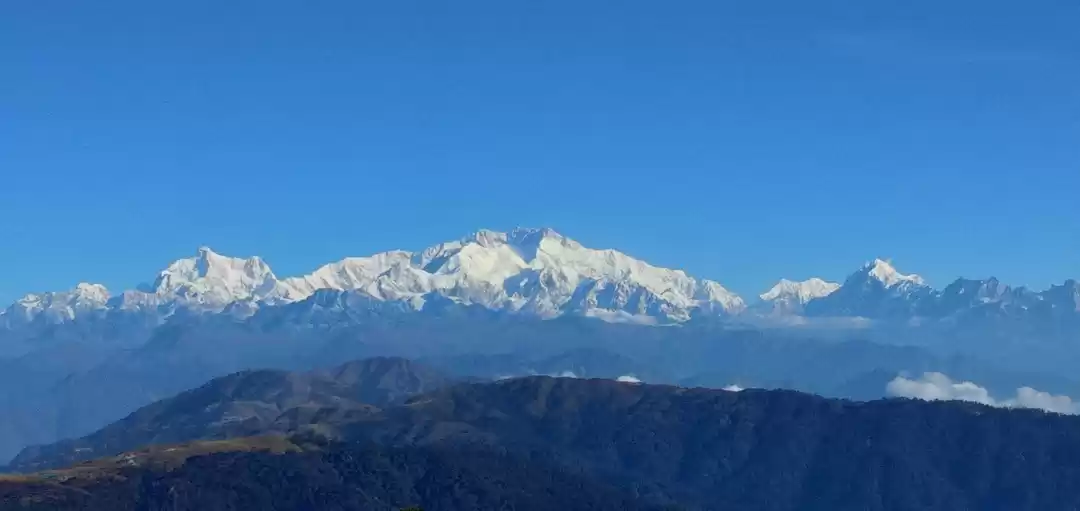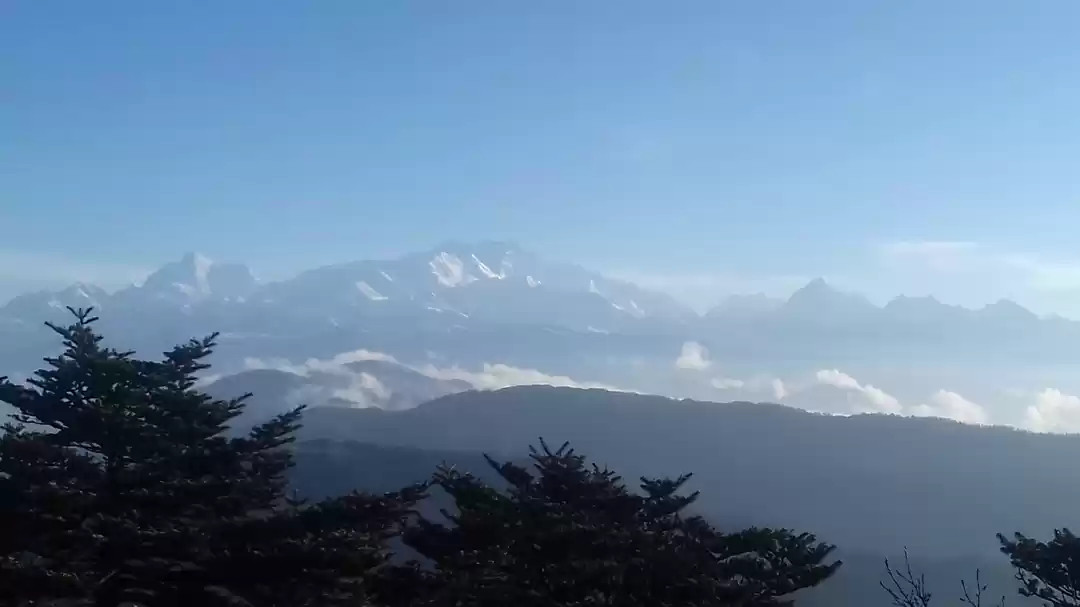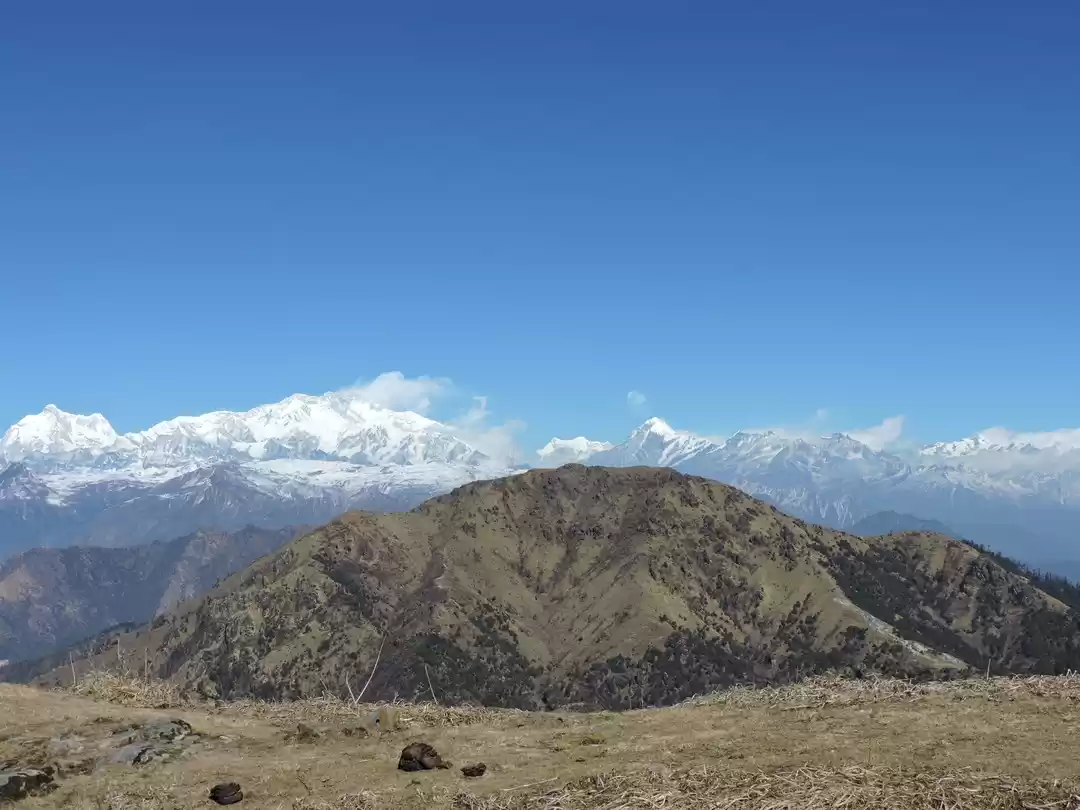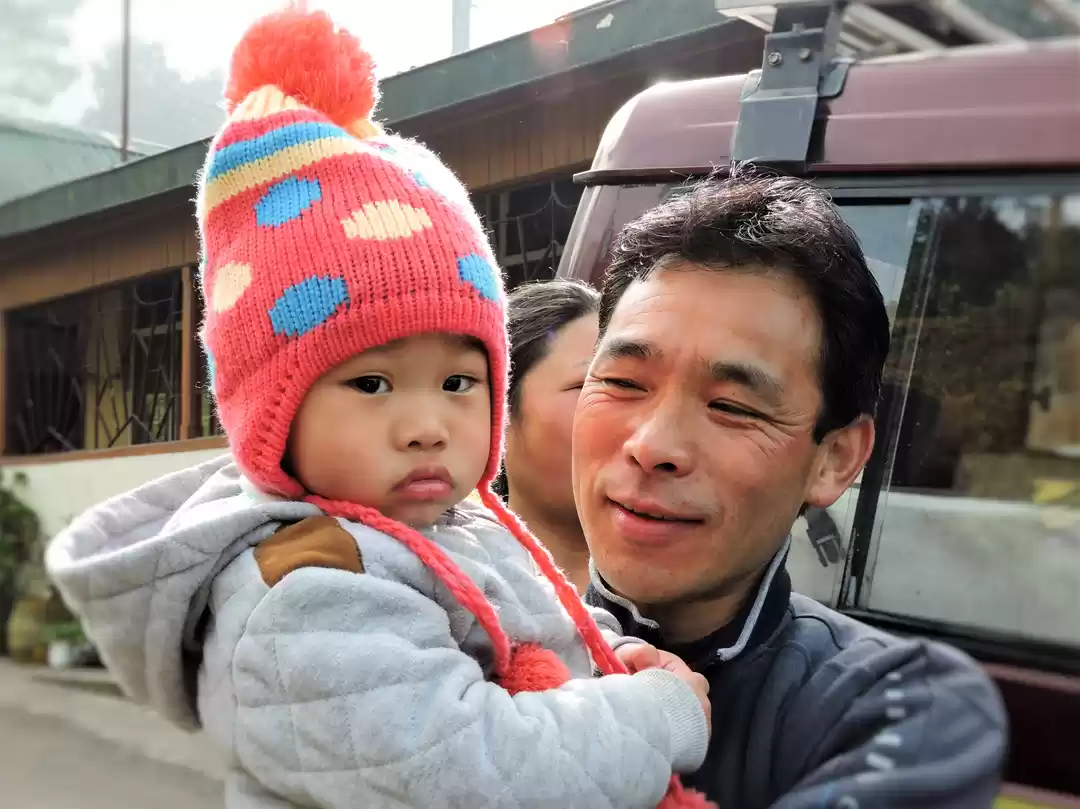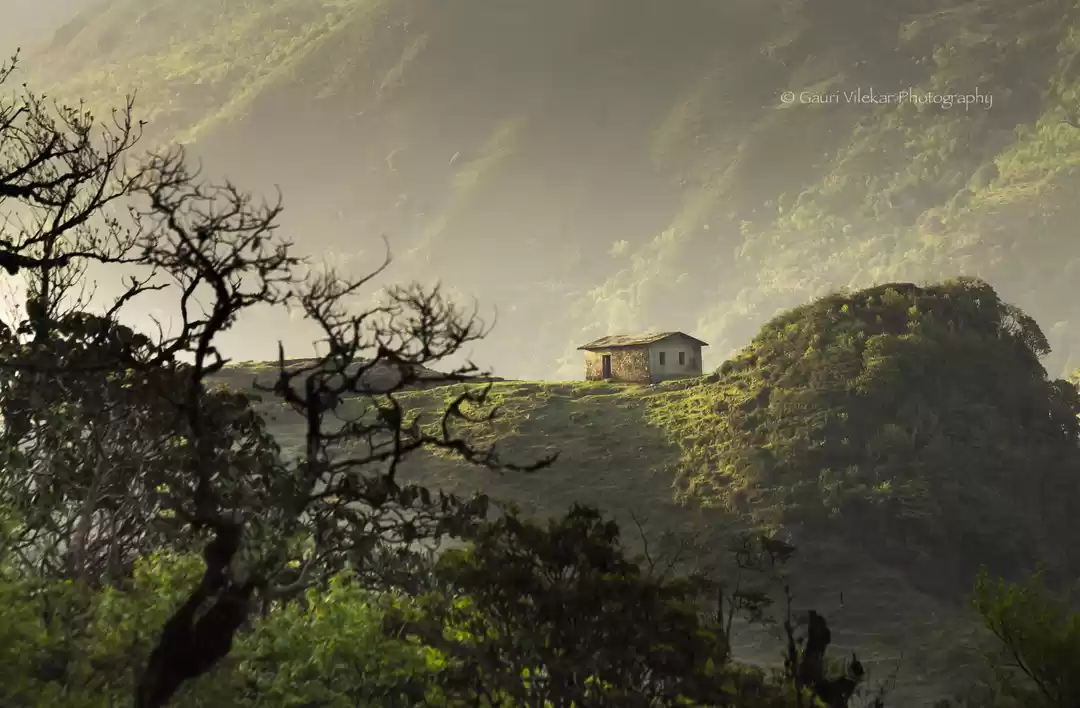











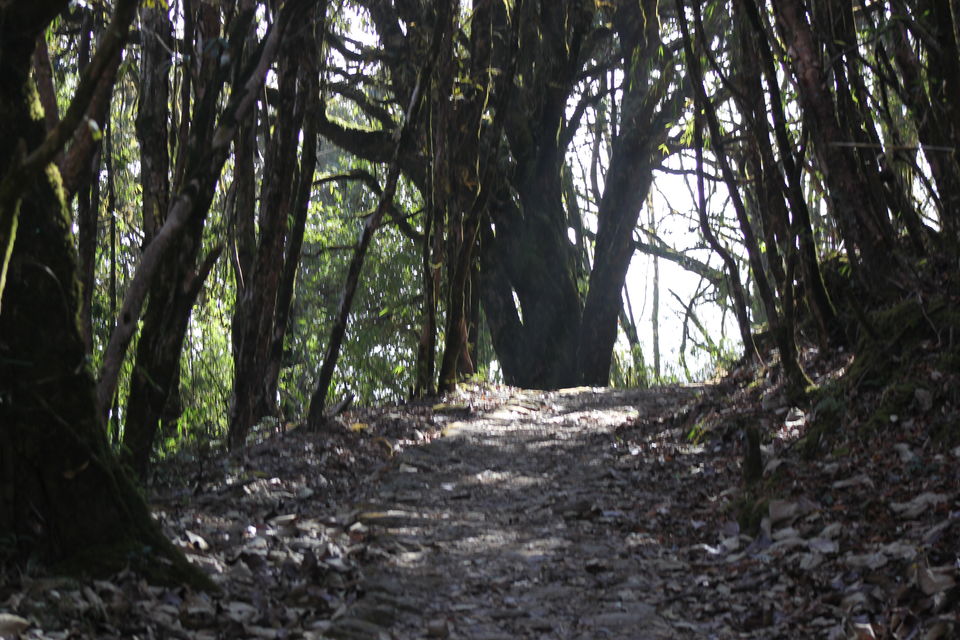
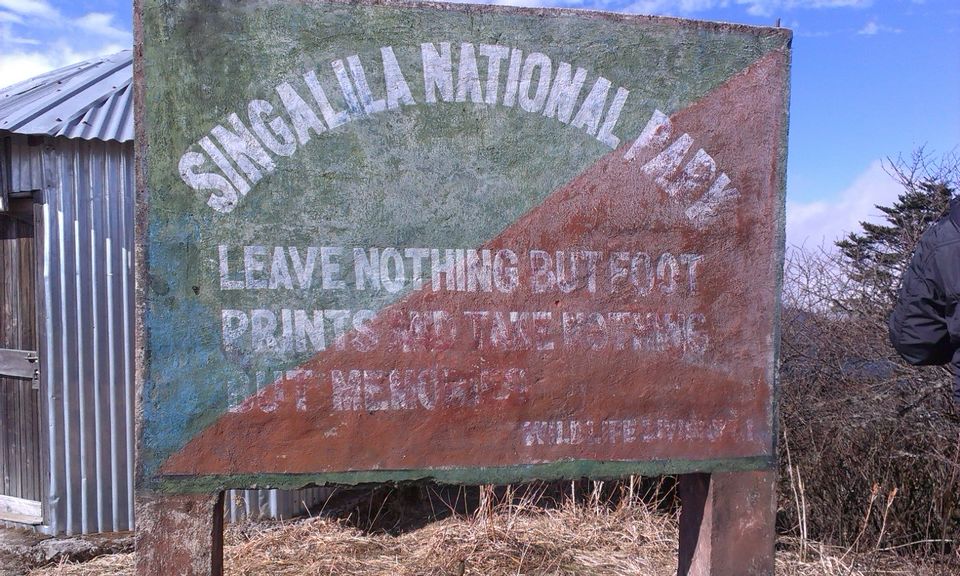
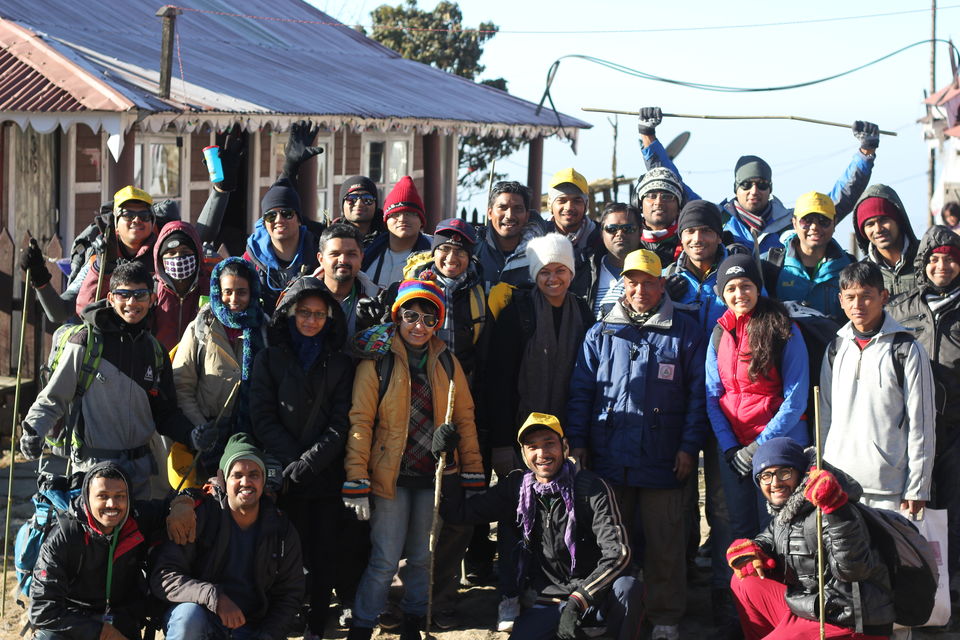
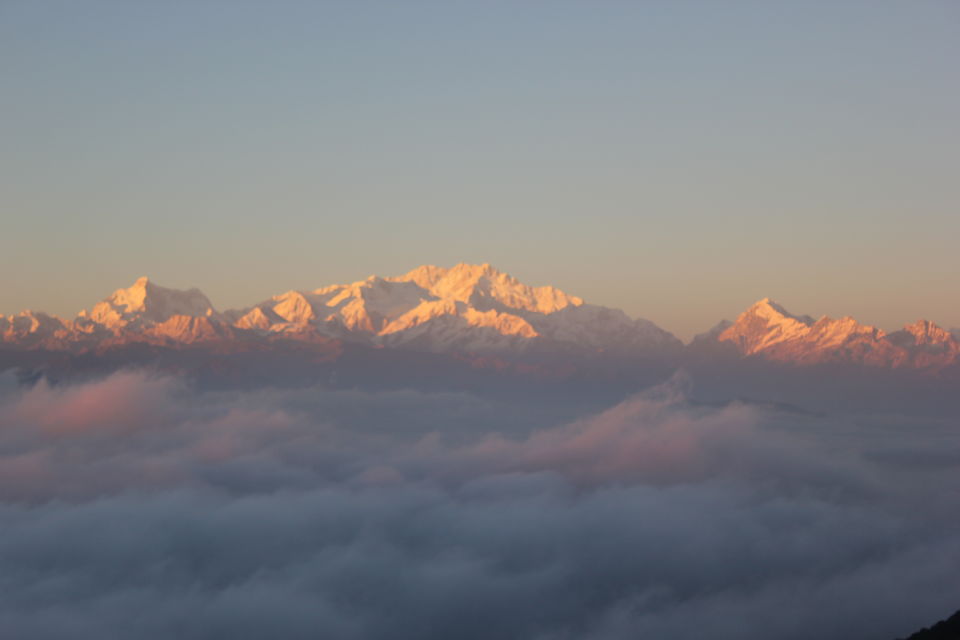
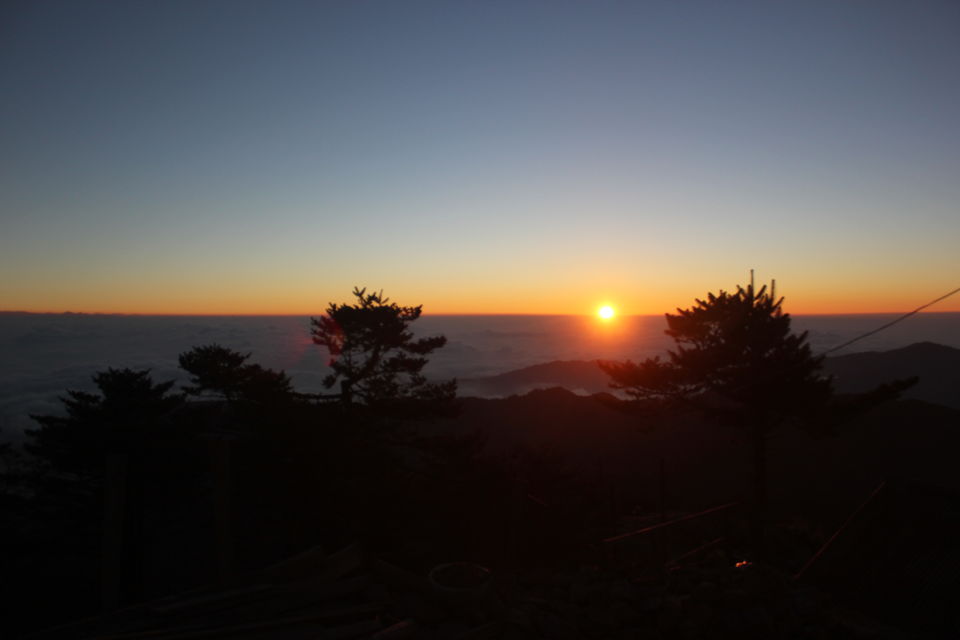
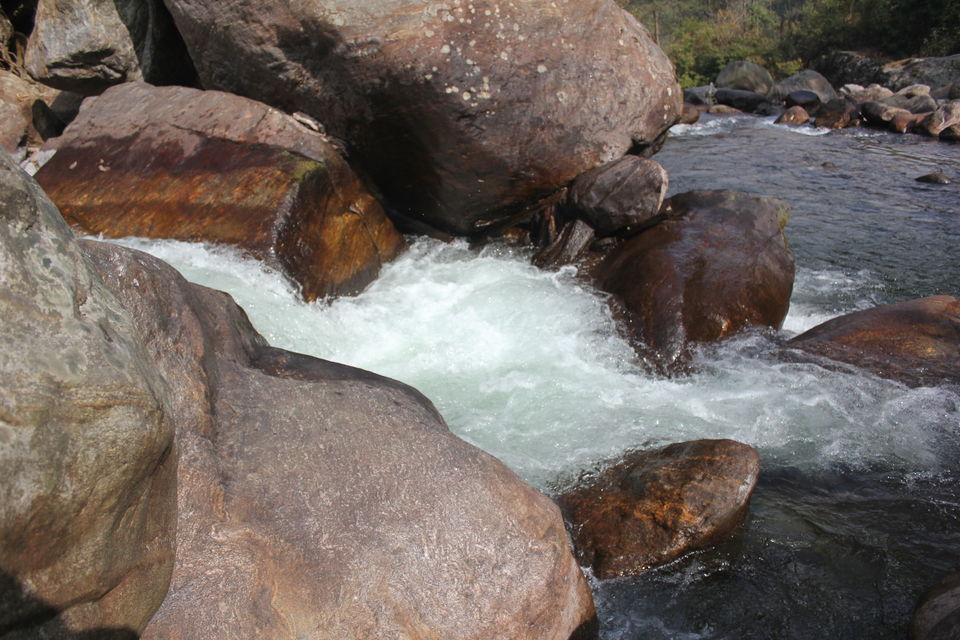
Coup de Foudre with Eastern Himalaya
Somewhere between the bottom of the climb and the summit is the answer to the mystery why we climb.
- Greg Child
Mountains never warmed me in particular. I could credit this antipathy to my upbringing at a place surrounded by hills on either side or the very fact that I get easily bored of the lack of activities on the mammoth structures. I always considered myself more of a sea person and realized it was the turquoise water and clear azure sky overhead that I enjoyed more than the snow-caps and lush greenery. However, this was a notion I fostered only until I dated the scintillating Eastern Himalayas.
Stretches of dense forest of magnolias, spruce, 600 varieties of orchid, 4 types of bamboos, neat rows of rhododendrons in myriad hues, unpredictable whimsical weather, chilled wind and enveloping all these, the 180 degree panoramic view of the majestic snow-capped range of the Eastern Himalayas with four of the highest peaks of the world- Mt. Everest, Kanchendijunga, Lhotse and Makalu-peering through the wild jungles of soaring pine trees. There is hardly a reason adventure freaks would not like to explore and trek through the Singalila range, summiting at Sandakphu, the highest peak of West Bengal. Sandakphu, a small village parked within the Singalila National Park is located at a height of 3,636 metres. With its wide spectrum of all the peaks of the dazzling Himalayan ranges, this lesser-known trekker’s paradise has started garnering attention of travellers from across the globe, who come here to witness the breath-taking monument carved immaculately by nature. The word Sandakphu is derived etymologically from ‘Sandak’ which means cold and ‘Phu’ which means wind in the Nepali dialect. Apart from its jaw-dropping beauty, the place is equally recognized for its erratic and biting wind straight from the Himalayas that travels at 60-175kmph.
The idea of trekking through the wild was conjured by a group of 8 ‘adventurous’ individuals of which only three of us finally braved it to the end. We started off the five-day track of 57kms on January 3 with a group of 27 young adventure freaks under a nationalised organisation. After a small customary ritual of sending off the trekkers with applaud, we were transferred by jeeps to our first halt, Maanebhajang, for our packed lunch and thereafter sent to Dhotrey, a small village covered with smog, which marked the starting of the arduous journey. Excited and a little nervous, all the trekkers set off on an enthusiastic and energetic mode which was brilliantly turned off within the first couple of hours, courtesy, the unpredictable and inclement weather and baggage of extremely heavy backpacks. A walk of close to 3 hours opened up in a meadow replete in plush greenery. It was there that the first dreamlike sight of the Kanchendijunga, basking in the sunrays, greeted us cordially. However, without having much time to spare complimenting the colossal beauty, we started off for the spot we needed to halt for lunch. Statutory warning to all first time trekkers: the journey post lunch is way more painful.
After close to 6 hours of walk stretched across 7kms, we reached our first camp, a small hamlet Tumling, on the Indo-Nepal border. Stay at a Nepali village, receiving text messages from network providers of Nepal, experiencing first camp fire (albeit only symbolic), tiny wooden rooms and scrumptious Nepali cuisines were all that was required. However, the pièce de résistance of Tumling remained the enchanting feel of spending a night above the clouds (quite literally) and the awe-inspiring view of the Sleeping Buddha or Sleeping Shiva, the illusionary image created by the entire range of the Eastern Himalayas. One of the countless best things of trekking is, bond with the rest of the world is snapped temporarily while that small coterie of adventurers becomes part of an extended family. Quite obvious, the first day of the camp was the most stirring with everyone getting to know each other through camp fire and over a mouth-watering dinner of rice, dal, potato fry and egg curry.
After nearly 16hours of rest we set off for the second day’s voyage that required wayfaring through 14 kms. The first break of the second day was at another small hamlet in Nepal called Joubari. The journey henceforth was fairly tough and hazardous as there were chances of slipping on ‘Bhaar Glass’, stones that get covered with transparent layer of ice but are not visible to the eyes. The road meandering through several hills and partially covered with snow led us into a small village called Gairibash that also had a small military set-up. The next 2 hours of journey made us climb one of the toughest terrains of the trek. The rugged hill with uneven stones made the ascend complex and tiring. Following some dedicated struggle our little troop reached the lunch halt for the day, Kainyakata. The packed lunch of Tibetian bread was all that we could pine for. Having crossed a challenging path we expected the journey to be a cakewalk henceforth. However, I would consider the 3km walk from Kainyakata to Kalipokhri the most painstaking. Temperature close to 0, sights blocked by the chilling fog and each turn leading to a slew of endless turn made this part of the voyage absolutely irksome. We reached Kalipokhri, the base camp of the second day around 3 in the afternoon after close to 7 hours of trek. Kalipokhri gets its name from a small pond with black water, considered sacred. If given a choice, it is this junction that I would consider the best in the five-day trip. For post dinner we witnessed something that could aptly be described as miss-and-blink odyssey to Paradise! With hardly any streak of light in the atmosphere atop the hill, the zillion of stars overhead seemed at stone’s throw distance from us. Enveloping the dark environ was the thick canopy of stars that covered Kalipokhri like a blanket. It was this overwhelming feeling of being on the top of the world that made us brave -7 degree with élan.
The fourth day of the trek was a mere 3 km uphill to our summit camp Sandakphu. Sandakphu being clearly visible from Kalipokhri made us assume the distance would be a rather short one to be covered within a couple of hours and for once at least, we were accurate in our presumption. A combination of easy and difficult treks, umpteen shortcuts and undeterred help from fellow trekkers made us accomplish this part of the journey in 3.5 hours. Let me not forget mentioning, the route to this summit camp also made us come across acres of aconide plantation, a tiny red berry used as a potent anti-ageing component but considered greatly toxic. It was almost noon when we reached Sandakphu. After a serving of hot soup some of us dared to scale the highest point of the place, exact 3,636 metres above sea level. Though a tough climb and descend, the pristine view of the celestial Himalayas floating above the clouds was worth facing the vagaries of nature. The sight witnessed from the peak had rendered all of us laconic. The stay at the summit camp is perhaps the most difficult, especially for people who aren’t used to extreme weather. The temperature recorded -12 degree while that inside the two-storied wooden guest house recorded -6 degree. It was undoubtedly the most trying night of the entire itinerary. However, as the adage goes, the darkest hour of the night comes before day break; the tough night did make way to the most beautiful sun rise of our lives. It was only the dreary bed of clouds at first. Eventually the contours started getting filled resplendently with the seven colours of VIBGYOR and then suddenly an orange ball popped up from under the clouds. It took us sometime to realise it was the callous sun that we often curse. Sun rise at Sandakphu should be on top priority on the bucket list of all adventure freaks.
The journey until now involved extensive uphill climb. However, the fourth day of the journey was all about descending, climbing almost 15 kms downhill. Unarguably this part of the trek programme was very exciting as we passed through dense forests, heard whistles of wind through the copious bamboo growth of different shades and sizes, crossed several water bodies and finally felt less chilly wind on our skin. However, it was a test of our limbs and all of us had turned into momentary Achilles with horribly weak heals by the time we reached our base camp Gurdum. Another worth-mentioning sight of this day’s trek was coming across a forest of burnt trees. The beauty veiled under the eeriness of the burnt trees was very well dichotomised. At Gurdum we were welcomed to a beautiful green wooden house encompassed by towering hills in every direction and a small garden. The accommodation provided here can be considered the best of the five-day journey. Good food in abundance and a decent cold made the stay delightful and pleasant.
The last day of the programme entailed another downhill climb and wandering through several verdant growths, a dilapidated hanging bridge with a stream flowing underneath and a couple of tiny waterfalls. All these led us to the lunch destination, a place called Sirikhola. This place has a small hotel that can literally be called ‘placed in the lap of nature’. Surrounded by hills and waterfalls, Sirikhola is ideal for people who wish to get away from the cacophony of city life and enjoy a few days in peace and serenity. The small stream facing the hotel gave all the photographers of the group stir their shutterbugs from their slumbers. While it was about clicking the opulence of Mother Nature all the time, this place gave everybody (read female trekkers) the perfect reason to arrest themselves with pouted selfies. After a halt of an hour or so the final leg of the journey began, a 2.5 hour walk to Rimbick, a small town of West Bengal. We were lucky enough to enter the place on their ‘haat’ day and thus were welcomed into a market teeming with people. Witnessing so many people after almost five days and the articulated discussions between the enthusiastic sellers and not-ready-to-give-up-on-their bargain made the walk through the market utterly intriguing. Sauntering through the busy streets we reached our last accommodation. Although Rimbick is more celebrated for its Dragon cups; China cups with dragons carved on them, often purchased as souvenirs, what we carried along as keepsakes were the mouth-watering flavours of two new edibles we had luckily got to lay our eyes on –Thaifu and Phalet. Thaifu is dumpling of gigantic size served with both chicken and vegetable filling and phalet is like a ‘parantha’ with chicken filling.
The last day of camp fire was thoroughly entertaining with each fellow trekker sharing interesting anecdotes from their lives and previous trekking experiences. It concluded with the valedictory ceremony of handling a certificate and memento to all the trekkers on completion of their journey and the ‘Grand’ dinner. Officially it was also our last day together and so most decided to spend the night gossiping away or bonding over a game of cards.
Early on 8th January we boarded the cabs for the final ride, winding the lifetime experience of five-days tucked in a corner of the world, away from the world. A small ride of nearly two and half hour brought us back to Darjeeling, the place we had started from, making the trip come a full circle. Following the customary goodbyes and exchanging of numbers we finally parted ways promising to bump into each other’s backpacks somewhere in some distant land!
Getting friendly with the mountains, surviving on limited food and water, picking up the art of staying without a shower for days, ditching all norms of urban living and going wild, experiencing the capricious character of nature, making new friends living up to the norms of friendship and above all, knitting a cognitive tapestry of the wonderful memories of ‘those five day’; It is only between the climb and summit that we found answer to the mystery of why we climb…
Photo courtesy: Samyamoy Debnath



